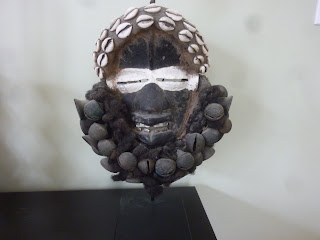
When the anthropologist of the future, 10,000 years from now, digs us up along with the remnants of our society, what will he think of us? That’s what these altar pieces contemplate. My rendering of these combustion engines is evidence of a mysteriously widespread activity that, for the anthropologist of the future looking at our past, would have no explanation for except religious. Looking at our material culture out of context, separated from their uses in our everyday lives, the anthropologist of the future can only speculate that these machines were a part of spiritual quest. This is a religious ark to combustion—a celebration of the many holy ways in which we burn fuel. To people of the future, we will be known as “The Fuel Burning People.”
The front of the altar is a barbeque that burns propane. We use propane instead of charcoal because it burns fuel quicker. The two front panel doors are gold-leafed. The image of the barbeque is carved into the gold-leaf and then washed with red ink. The ink is absorbed into the wood and then wiped off the gold-leaf. When you open the ark you see 6 carved and painted small side panels. They depict the different ways in which we burn fuel—on snow, in water, in the desert, on mountain roads, and even in our kitchens. A domestic stove is not holy enough for the “Fuel Burners.” Only an industrial Viking Range stove will do justice to the ritual.
The center piece is the F1 rocket engine that powered the Apollo missions. That engine has become a source of wonder for me because it’s in Woodland Hills, near where I used to live, in a parking lot of what used to be a Rockedyne factory.
It’s unusual to just see the rocket engine alone, because it is usually accompanied by its huge fuel tanks. The rocket idealizes the vast consumption of fuel within the shortest span of time. The anthropologist of the future will see these as sacraments that denoted one’s status to God, according to how much and how fast the fuel was burned up.

































